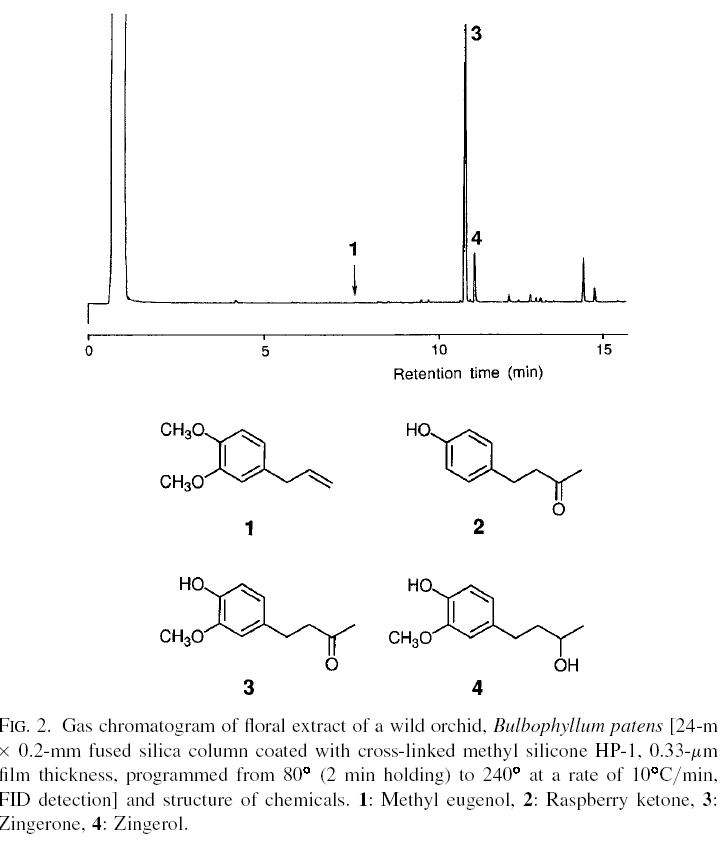

|
|
|---|
Phytochemistry
The flower of Bulbophyllum patens attracts certain species of male fruit flies of the Bactrocera species. They do this with a specific fragrance in the rain forest of Malaysia. It cunningly traps flies between its hinged see-saw lip and column for just enough time for pollination to occur. The attractant component is zingerone. Zingerone has a structure resembling two major fruit fly attractants - methyl eugenol and raspberry ketone. These attractants show potency to attract a wide range of fruit fly species. Examples of these flies are B. carambolae, B. caudata, B. cucurbitae, B. tau, and B. umbrosa. A fruit fly visitor is rewarded by feeding on zingerone, and in return it removes the pollinarium (the male reproductive system of an orchid) and then transfers it to another flower.
Flies also use zingerone to attract female flies. Males of the melon fly acquire the floral essence and selectively store it in the pheromone gland to attract females of the same species. Males of B. papayae, however, convert zingerone to zingerol in the crop. The latter compound is stored in the rectal gland and subsequently released to attract females. This provides a rare example of a mutualistic (An association between organisms of two different species in which each member benefits) interaction between insects and plants via a floral synomone (A compound produced by an organism in which both species involved benefits), in which both organisms obtain advantages directly benefiting their reproductive systems.

|
The above GC shows that the majority of the floral extract of the Bulbophyllum patens is zingerone. This shows the importance of zingerone to this flower. This makes sense due to the fact that zingerone aids the reproductive process of this flower. |
 |
|
Zingerone Flower |